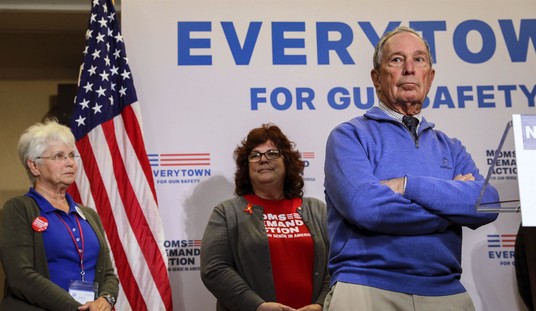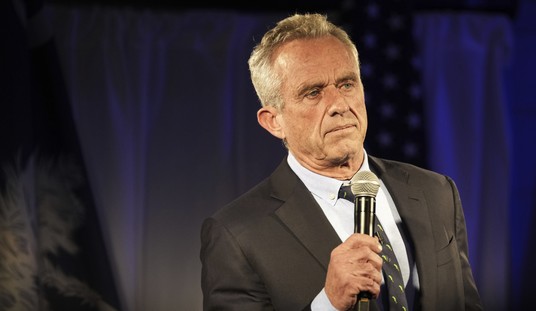2020 was a hell of a year. Take what you will from that statement. To say that Americans and the world at large had to deal with some challenges, would be an understatement. The defunding of the police was implemented in certain jurisdictions. Policy makers were able to say they “nailed it”, not really, when it came to public safety. Naturally, beyond the pandemic related issues, there was the matter of the many so-called mostly peaceful protests. The subject of police use of excessive force is polarizing, and not as cut and dry as it may seem. There are plenty of situations we can say “that’s right” or “that’s wrong”, but not to everything. A recent MEMO from Attorney General Merrick Garland clarifies and updates the policy on use of force.
Attached is the Justice Department’s updated use-of-force policy. This policy has been crafted in consultation with, and has been approved by, the heads of the ATF, DEA, FBI, and USMS. With these updates, our Department-wide policy is now more in line with the training and best practices you use every day. Our policy was last updated in 2004 — eighteen years ago.
In the time since, you have all spent countless hours training to the highest standards of law enforcement. And you have continued to steadfastly uphold the legal standards set forth in Graham v. Connor and Tennessee v. Garner.
The updated policy draws from the 2020 National Consensus Policy on Use of Force, drafted by a coalition of eleven major law enforcement groups representing federal, state, and local law enforcement officers. The policy reflects the excellence we have come to expect from the Department’s officers and agents, while protecting their safety and the safety of the people and communities we serve. I am grateful to the Department’s law enforcement components for your time and valuable input throughout this process.
The policy will take effect in 60 days, on July 19, 2022. Each law enforcement component will designate a senior official with responsibility for implementation. That official will ensure that all component policies and training are aligned with this policy by the effective date.
Thank you for your service and for your commitment, day in and day out, to upholding the Constitution and keeping all of us safe.
The policy has a specific portion where it discusses “excessive force.”
Officers will be trained in, and must recognize and act upon, the affirmative duty to intervene to prevent or stop, as appropriate, any officer from engaging in excessive force or any other use of force that violates the Constitution, other federal laws, or Department policies on the reasonable use of force.
Okay, no one should have an issue with that, right? I mean, if an innocent person was involved in a situation where they were complying with a peace officer’s instruction’s and were being brutalized, we can agree it’d be a good thing to have another person step in and stop whatever excessive use of force might be in progress. As a society of civilized people, I’m good with that.
The MEMO and policy does not define “excessive force” explicitly. There are definitions for many things, but “excessive force” is not one of them.
Looking at the source document that Garland lauds in his MEMO offers a little insight. The 2020 National Consensus Policy on Use of Force cited in the MEMO is actually entitled National Consensus Policy and Discussion Paper on Use of Force. Maybe this is splitting hairs, but trying to find the paper as described via the title in the MEMO required some extra searching and I dare say thought. Conveniently the paper was not hyperlinked in Garland’s MEMEO or in any of the press releases related to the policy implementation. I don’t know if that’s by design or just a simple oversight. Regardless, it can be found HERE.
We’re going to look specifically for “excessive force” mentions within the paper. Like the MEMO, this paper does not explicitly define “excessive force.” Here are the mentions:
Under Procedures and General Provisions:
An officer has a duty to intervene to prevent or stop the use of excessive force by another officer when it is safe and reasonable to do so.
Under Legal Considerations and Federal Use of Force:
Graham v. Connor. In Graham, a diabetic man seeking to counter the effects of an insulin reaction entered a convenience store with the intent of purchasing some orange juice. After seeing the line of people ahead of him, Graham quickly left the store and decided instead to go to a friend’s house. An officer at the store, Connor, determined Graham’s behavior to be suspicious and proceeded to follow and then stop the car in which Graham was a passenger. Graham was subsequently handcuffed and received multiple injuries, despite attempts to inform Connor and the other responding officers of his medical condition. Graham was released once Connor confirmed that no crime had been committed in the store, but later filed suit alleging excessive use of force.
The court ruled that claims of law enforcement excessive use of force must be analyzed using an “objective reasonableness” standard. Specifically, the court stated “[t]he Fourth Amendment ‘reasonableness’ inquiry is whether the officers’ actions are ‘objectively reasonable’ in light of the facts and circumstances confronting them, without regard to their underlying intent or motivation. The ‘reasonableness’ of a particular use of force must be judged from the perspective of a reasonable officer on the scene, and its calculus must embody an allowance for the fact that police officers are often forced to make split-second decisions about the amount of force necessary in a particular situation.”
Under Guiding Principles:
The decision to employ any force, including the use of firearms, may be considered excessive by law and agency policy or both, if it knowingly exceeded a degree of force that reasonably appeared necessary based on the specific situation. It is important to note that in Graham, the U.S. Supreme Court recognized that law enforcement officers do not need to use the minimum amount of force in any given situation; rather, the officer must use a force option that is reasonable based upon the totality of the circumstances known to the officer at the time the force was used. Use-of-force decisions are made under exceedingly varied scenarios and often on a split-second basis.
Under Procedures and General Principles:
If the level of force exceeds what is necessary to control a subject, then the officer can be subject to allegations of excessive force.
…
While the Consensus Policy strives to prohibit excessive force, the reality is that excessive force can occur no matter how well-crafted the policy or extensive the training. In these situations, it is crucial that other officers at the scene intervene to prevent or stop the use of excessive force. By requiring a pro-active approach to these situations and encouraging accountability for all officers on the scene, agencies can work toward preventing excessive uses of force.
As drawn out as that all might be, it does have contextual importance for the scaffolding of what the DOJ is stating.
The policy points to federal officers. In short, should a federal officer find another officer of the law to be imposing “excessive force”, they’re to intervene. To re-quote, the document states “The ‘reasonableness’ of a particular use of force must be judged from the perspective of a reasonable officer on the scene…” Or if the force differs from a policy of one of the departments. Policy can be changed fairly easily, as we can see illustrated by Garland’s MEMO.
While we march forward into and through 2022, there has been some foreshadowing of some possible violence. How the nation, or certain people in the nation, may choose to react to Supreme Court opinions affecting abortion and gun rights, remains to be seen. We just don’t know if we’re sitting on a powder keg, do we?
Should violence erupt in different jurisdictions in the country, it’s going to be by the standards set forth by federal officers and their “perspective” or opinion, whether or not tactics local police forces are using are considered excessive.
Noted in Consensus Policy:
…there are situations where the use of force is unavoidable. In these instances, officers must “use only the amount of force that is objectively reasonable to effectively bring an incident under control, while protecting the safety of the officer and others.”
I’m not making any outward inference or prediction here, just making a philosophical observation. There’s much to be desired coming from the DOJ and those under the umbrella of it, the multi-lettered agencies, all under Biden-Harris rule. What they find reasonable and what other people may find reasonable, I think there’s going to be a chasm. It’s my hope that this chasm is not the difference between having law and order, and watching our cities burn and society crumble.
These agencies can also easily change their policies and intervene when they see fit. Use your imagination.
My hope is that this policy is authentic and implemented for the intentions stated. It’s sad that in modern times an affirmative duty to intervene policy had to be written. The policy of writing into rule that one officer of the law is to stop another when engaging in the use of excessive force, one would think that this would be common practice without having to be written. I’d like to think that the high profile incidents of the contrary would be rare. However, that’s opinion. What I think probably differs from what policymakers think…just as what one person or entity finds to be reasonable, might not be reasonable to another. Hoping for a peaceful summer (and rest of 2022+).








Join the conversation as a VIP Member